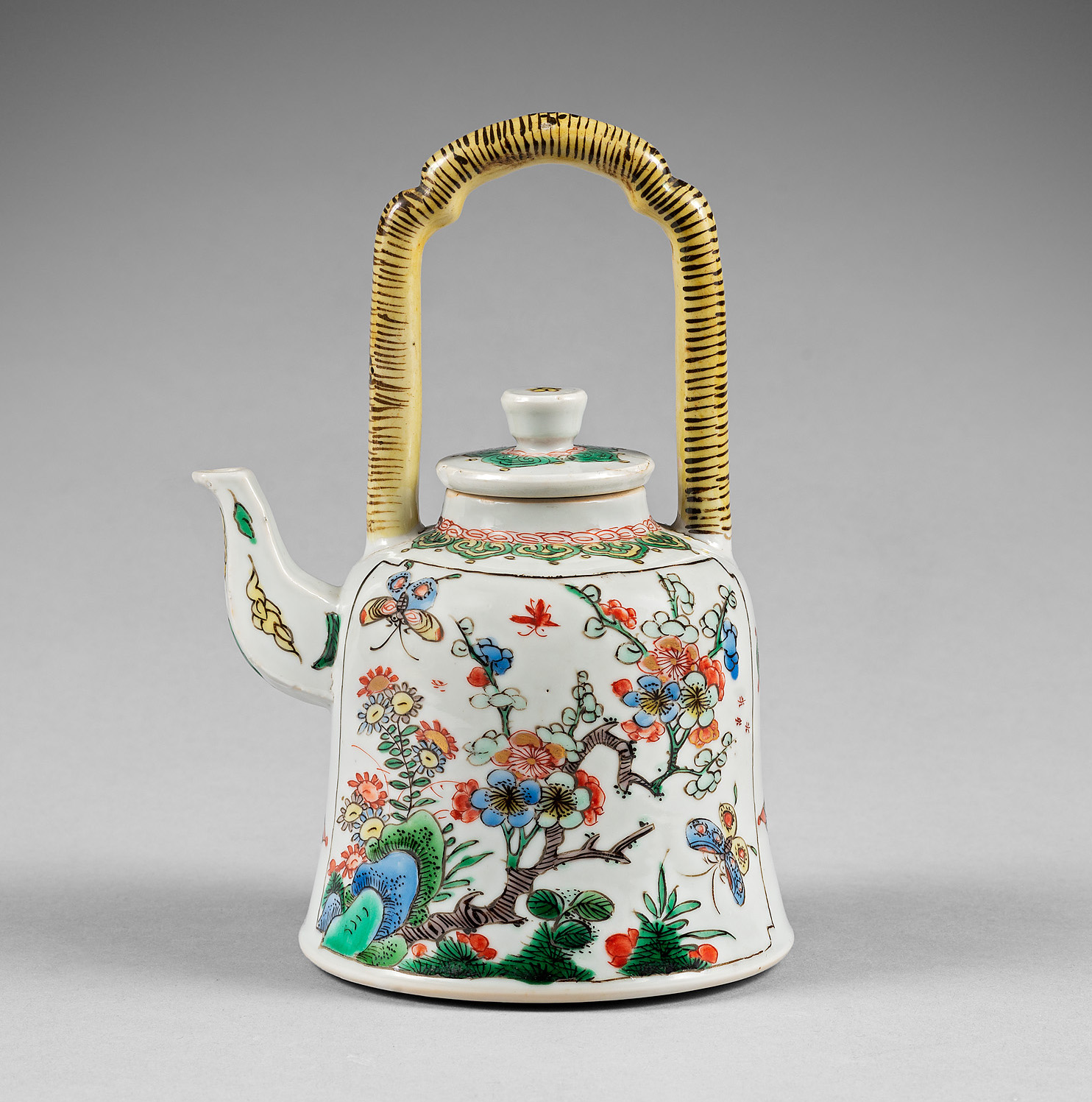
A Chinese famille rose plate after Maria Sybille Merian. Qianlong period
Finely enamelled at the centre with a white-bodied caterpillar crawling on the leaf of a blue iris, beside another with green body crawling amongst the petals of an orchid, a butterfly hovering above, enclosed by an underglaze blue and gilt floral band in the well and a broad band of elaborate strap work, acanthus leaves and gilt stylized flower-heads at the border.
- Country:
- China
- Period :
- Qianlong (1735-1795), ca. 1738
- Material:
- Porcelain
- Dimension:
- 8.85 in. (22.5 cm)
- Reference :
- D500
- Status:
- sold
Related works
Four plates are illustrated by Maria Antonia Pinto de Matos and Jorge Welsh Research & Publishing in The RA Collection of Chinese Ceramics – A Collector’s Vision, TII, no. 303, 198.
For a large dish (from the collection of the Musée des Arts Décoratifs de Paris, gift of Paul Pannier, 1918, inv. 21031 A), see “De la Chine aux Arts Décoratifs”, p. 37, no. 28.
For a plate, see Howard & Ayers, China for the West. Chinese Porcelain and other Decorative Arts for Export illustrated from the Mottahedeh Collection, p. 304, no. 298 (sold at Sotheby’s NYC, 19 october 2000, lot 228).
For a plate, see Howard, The Choice of the Private Trader. The Private Market in Chinese Export Porcelain illustrated from the Hodroff Collection, p. 78, no. 60.
For two saucers and one plate, see Christie’s London, Chinese Export Porcelain from a European Private Collection, 11 may 2004, lot 14 & 15.
For a charger, see Cohen & Cohen ( London), cat. 11.
For a plate, see Sotheby’s, The collection of Khalil Rizk, 25 april 2008, lot 131.
For a pair of plates, see Christie’s NYC, The Dr. Anton C.R. Dreesmann Collection European Furniture, 10 april 2002, lot 416.
For a saucer, see Christie’s NYC, The Hodroff Collection, Part III, 21 january 2009, lot 207.
Similar plates are also in the collections of the British Museum (London), of the Rijkmuseum (Amsterdam).
Notice
The main image is taken from a design that is traditionally attributed to Maria Sybille Merian (1646-1717), a remarkable Natural Historian and botanical artiste who travelled to the Dutch West Indies in 1698. She later published a book of her drawings, Metamorphosis Insectorum Surinamensium (published in Holland in 1705 and in France in 1771 with the title “Histoire Générale des Insectes de Surinam et de toute l’Europe“). It is not know which source had been used, as the complete image is not found in her books.
The designs on the rim and the cavetto are also unusual and closely correlate with an imperial vase in the collection of Victoria & Albert Museum (Qianlong mark and period, circa 1740), which also has the iris and anemone from Merian’s Prints.

The border design can be attribued to the workshop producing designs by Cornelis Pronk and it may even be one assembled by him, or by a second talented designer working with the VOC who may have been responsible for a number of the other designs attributed to this workshop but with no direct attribution to Pronk.
This design was also painted in underglazed blue, and the design of the border on two grisaille armorial services for the Dutch market (see Kroes, Chinese Armorial Porcelain for the Dutch Market, 2007, p. 284-6).
The origin of this composite design was discovered by C. Jacob-Hanson (Maria Sibylla Merian, artist and naturalist, The Magazine Antiques 158, no. 2, august 2000, pp. 174-183.

























